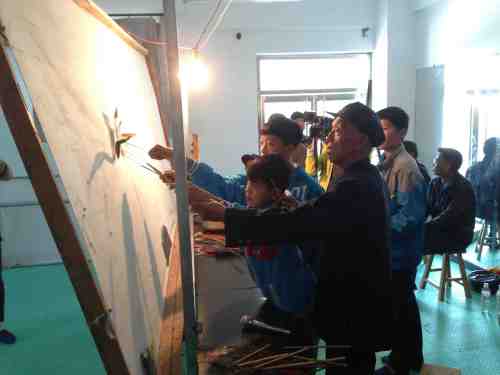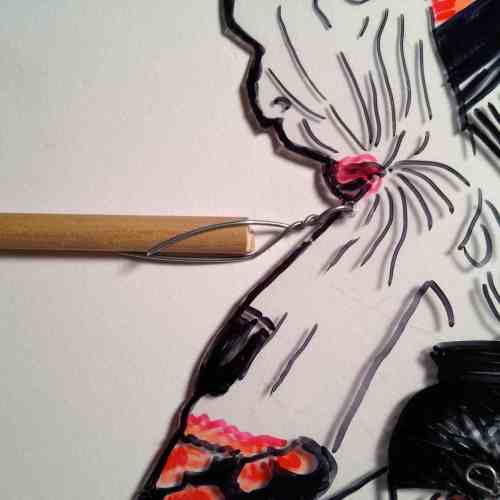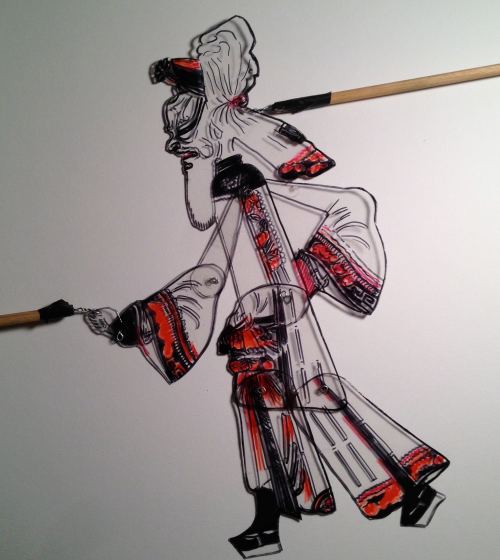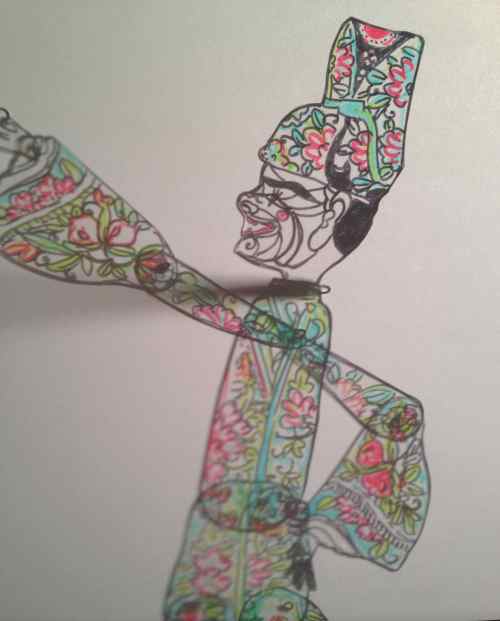Nearly every time I talk with a shadow puppet practitioner in China about inheritance, future or preservation, “非物质文化遗产”or “The Intangible Cultural Heritage Project” is the next subject that follows. It’s a bit of an urban legend everywhere you go; everyone has heard of it, fewer know about the actual particulars of the project, and most rare are those who have actually received the benefits of its inception. But, as mixed as the tangible results may be, it is clear that the project’s reputation and shadow puppetry’s recent inscription onto the coveted list, has brought a sea change of pride and validation to the working artists.
The Intangible Cultural Heritage Project (ICH) was started in 2003 by the United Nations Educational, Scientific and Cultural Organization (UNESCO) in an attempt to staunch the hemorrhaging of the world’s cultural practices before it was too late. So far, it’s registered nearly 300 intangible cultural heritage practices in dozens countries. Chinese shadow puppetry was inscribed on a national level just around the time I was ending my Fulbright trip in 2011. It was an instant boost in moral, a charge to the heart of shadow puppetry. It made it seem as though things were picking up, that help wasn’t too far away. However, talking with artists in 2012 and 2013, it was clear the realities hadn’t met with their expectations. But, what were the realities and why were those expectations universal? I couldn’t seem to get a straight answer from anyone. The larger truth slowly appeared as anything but concrete; anytime you mix politics with art, it gets complicated.
I finally sat down last summer to read through the available material UNESCO provides on the subject. The slickly designed pdf’s on Register of Best Safeguarding Practices and Operational Directives for the Implementation of the Convention were beautiful and inspiring, but did little to inform me of the day-to-day workings of the project. I was confused and long days of deep googling did nothing to clarify things. So, I decided to go to the source.
During my stop over in Beijing in early May, I popped into the UNESCO office for a meeting. My pestering had finally got the best of them and a gracious project manager, named Julien Glenat, agreed to give me an hour of his time. And, as suspected, much was cleared up in that little hour.
Julien clarified that UNESCO merely writes a convention, loosely, and leaves all of the regional implementation up to the local Ministries of Culture (MIC). In this way they are incredibly hands off. No accountability, no policing, just suggestions. Julien stated that “each country is quite free to implement it as they wish. More importantly, as the local community wishes. I think the central notion of the convention is the communities – what they consider as intangible heritage.” This distinction is important. UNESCO and the ICH project keeps the language intentionally vague in order to avoid exclusion of the world’s great diversity of ICH practices. Sometimes, though, the vagueness of language leaves governments confused, wishing instead for an ICH ‘to do’ list.
I asked specifically about China, whether this vagueness in language had stunted their efficiency in anyway. I was happy to hear that China has stepped up in the Eastern region as a role model and have been progressive in their work with ICH. They’ve even established an independent ICH office in nearly every province to assist with more efficacious planning. (Again, UNESCO’s offices only guide and assist; China’s Ministry of Culture does all of the actual implementation and policy making.) The Ministry of Culture is even working to establish an annual ICH conference with most of the bureau’s in attendance: science, education, business, etc in order to spread awareness and develop collaborations.
We talked for a while longer about the efficacy and possible corruption in the local offices, the awkward collaboration between politics and artists, and my worries about tacit learning and embodied transmission from master to apprentice (which is not mentioned in their ‘best practices for safeguarding’). After all my questions were answered, I asked Julien what his primary concerns for the immediate future were as he is there, everyday, witnessing the swift and irrevocable changes. He says he is most concerned with China’s tendency to direct their ICH woes to the tourism industry with a lot of speed and little reflection. I echo the same worry with Chinese shadow puppetry. Too often, when this shift is done in haste, it tends to only benefit the businesspeople, not the artists, and leaves the soul of the practice somewhere in limbo.
We bemoaned our shared feelings of inadequacy at times – is what we’re doing really effective? Does anyone care? Are we making things worse? But, Julient, who no doubt has thought about this more than I have, declared that there was “no small effort for culture.” And, I sincerely hope he’s right.
Thanks for reading~
*Thanks to Julien Glenat and the UNESCO Beijing office for their time.


 This cutting sample is made by a student out of thin, flexible plastic – a more economic learning material than leather.
This cutting sample is made by a student out of thin, flexible plastic – a more economic learning material than leather.


































